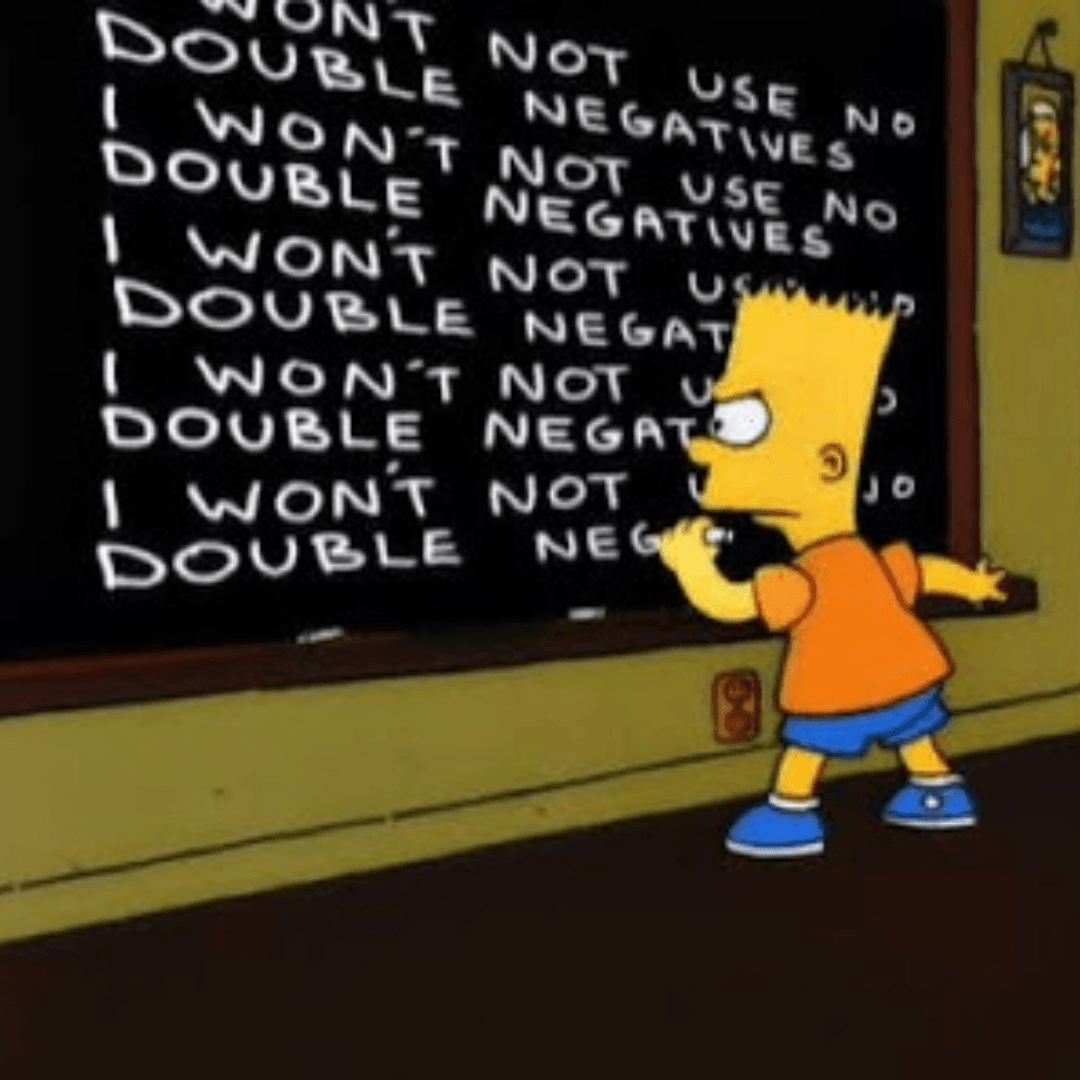We hear a lot about the power of positive thinking, and even occasionally about how “negative thinking” (like “failure is not an option”) can drive commitment. But what about the subtle yet potent influence of “double negative thinking”? We all learned in school that two negatives make a positive, but I believe the act of using a double negative in communication holds a unique power that simple positive thinking often lacks, especially when navigating challenges or resistance.
Beyond Simple Positivity or Negativity
Positive thinking is intuitive: framing things positively makes challenges feel more like opportunities and failures like learning experiences. It’s vital, but an overuse can sometimes come across as out of touch with reality; a kind of “delusional optimism.”
Negative thinking, as famously employed by figures like former NCAA coach Bob Knight, uses negative framing to forge an unwavering commitment to a positive outcome (e.g., “We will not lose this game”). The risk here is that if not carefully directed, it can simply devolve into pervasive negativity.
“Double negative thinking,” however, offers a distinct advantage: it’s a tool to acknowledge a negative assertion and then actively pivot the conversation back towards a positive possibility, often by neutralizing the initial negativity.
How “Double Negative Thinking” Works in Practice
When you encounter negativity or resistance, especially in a team or project setting within your Small or Medium-Sized Business (SMB), try using a double negative to reframe the dialogue:
- Negative Nancy: “We’ve tried that new software before; it won’t work for our team.”
- Double Negative Ned (You, the Leader): “We’ve explored similar tools before, but that doesn’t mean this updated version won’t not address our current needs if we approach the pilot differently.”
- Negative Norman: “This IT project deadline is too tight; we are definitely going to fail.”
- Double Negative Noreen (You, the Leader): “The deadline is indeed tight, but that doesn’t mean we are not going to succeed if we re-prioritize these key tasks and get the right support.”
Simply countering with a purely positive spin (“I’m sure it will work!” or “We will succeed!”) can sound dismissive or overly simplistic, especially when challenges are real. The power of the second negative lies in its ability to acknowledge the stated difficulty while simultaneously opening the door to a positive outcome and inviting a re-examination of possibilities. It subtly shifts the burden of proof.

The Action of Turning Negative to Positive
Mathematically, +2 x +2 = 4, and -2 x -2 also equals 4. However, there’s a fundamental difference in the action of transforming a negative into a positive versus simply starting with a positive. If you’re presented with a “-2” (a negative statement or outlook), merely offering a “+2” (a positive counterpoint) might not be enough to shift the underlying sentiment. Using a double negative helps neutralize the initial negative and then build towards a positive.
Applying This in Your SMB: A Fractional CIO’s Perspective
As a fractional CIO, I often encounter skepticism when proposing new technology strategies or process changes. Team members might say, “That new system is too complex; our team can’t learn it.” A double negative response like, “It’s different from what we’re used to, but that doesn’t mean our team can’t not master it with the right training and support,” acknowledges the perceived difficulty while redirecting towards capability and a positive path forward. It invites problem-solving rather than shutting down the conversation.
What’s Next
Try “double negative thinking” the next time you face resistance or negativity in a discussion. You might be amazed at its power to subtly reframe the conversation, acknowledge challenges without succumbing to them, and steer your team towards more constructive, positive action. It’s a nuanced communication tool that can help your SMB “Succeed Sooner.”
Is negativity or resistance to change sometimes a hurdle in your SMB’s strategic initiatives or technology projects? If you’re looking for a partner who can help you navigate these conversations and foster a more resilient, solutions-oriented culture, let’s connect with Succeed Sooner Consulting.


Leave a Reply